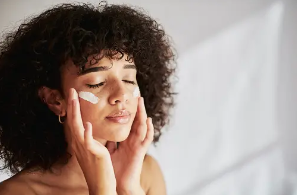As the largest organ of the body, our skin plays a crucial role in both our appearance and overall health. Having healthy, radiant skin is a common desire for many people, as it contributes to self-confidence and well-being. However, various factors can influence the appearance of our skin, with aging being a primary concern. While natural aging is an inevitable process, another type of aging, known as photoaging, is largely preventable. Photoaging is caused by excessive exposure to ultraviolet (UV) radiation from the sun, leading to premature skin damage and deterioration. In this article, we will delve into the world of UV radiation, its impact on our skin, and the importance of protecting ourselves from its harmful effects to maintain healthy, beautiful skin throughout our lives.
What is UV Radiation and How Does it Affect Your Skin?
Sunlight is a complex mixture of different types of radiation, including ultraviolet (UV) radiation, visible light, and infrared light. While the majority of the sun's spectrum that reaches the Earth's surface consists of visible light and infrared light, UV radiation makes up a small but significant portion.

What Makes Up the Spectrum of Sunlight?
The sun emits a wide range of electromagnetic radiation, but only a specific range of wavelengths reaches the Earth's surface. This spectrum includes:
- Ultraviolet (UV) radiation (100-400 nm)
- Visible light (400-700 nm)
- Infrared light (700 nm - 1 mm)
How Much UV Radiation is in Sunlight and Why is it Important?
Although UV radiation only accounts for about 10% of the total sunlight that reaches the Earth's surface, it has a significant impact on our skin health. This is because UV radiation carries more energy than visible light and infrared light, making it capable of causing more damage to our skin cells.
What are the Different Types of UV Radiation?
UV radiation can be further divided into two main categories based on its wavelength:
- UVB rays (280-315 nm): These rays have shorter wavelengths and higher energy levels. They are primarily responsible for causing sunburn and skin cancer.
- UVA rays (315-400 nm): These rays have longer wavelengths and lower energy levels compared to UVB rays. They penetrate deeper into the skin and are the main contributors to photoaging, wrinkle formation, and skin damage.
It is esssential to understand the composition of sunlight and the specific characteristics of UV radiation for developing effective strategies to protect our skin from the harmful effects of sun exposure.
Effects of Different Ultraviolet Rays
UVB and UVA rays have different effects on the skin due to their varying energy levels and ability to penetrate the skin's layers.
1. UVB vs UVA Rays
UVB rays have shorter wavelengths and higher energy compared to UVA rays. This allows UVB to penetrate only the top layer of skin (epidermis). UVA rays have longer wavelengths and lower energy, enabling them to reach deeper into the skin's second layer (dermis).
2. Immediate Effects of UVB
UVB rays are the main cause of sunburn - the reddening, swelling, and potential blistering of skin after too much exposure. UVB can also lead to issues like freckles or age spots.
3. Long-Term Effects of UVA
While UVB causes more immediate visible damage, UVA rays are responsible for long-term effects like premature skin aging (photoaging). UVA breaks down collagen and elastin, leading to wrinkles, sagging, and leathery skin over time. It can also contribute to uneven skin tone and pigmentation disorders.
4. Unique Risks of UVA
The deep penetration of UVA allows it to damage melanin-producing cells, causing age spots and uneven pigmentation. UVA may also worsen certain skin conditions like lupus or polymorphous light eruption (a sun-exposure rash).
Benefits and Risks of UV Exposure
UV radiation from the sun is a double-edged sword – while moderate exposure can provide some benefits, excessive or prolonged exposure can have serious negative consequences on our health.
The Positive Effects of Moderate UV Exposure
While excessive UV exposure is undoubtedly harmful, it's important to acknowledge that moderate levels of UV radiation from sunlight can provide some benefits to the human body. One of the primary advantages of moderate UV exposure is its role in facilitating the synthesis of vitamin D.
Vitamin D is a crucial nutrient that helps regulate calcium and phosphate levels, promoting bone health and strength. When UV rays from the sun penetrate the skin, they trigger a photochemical reaction that converts a precursor compound into vitamin D3, the active form of vitamin D.
Additionally, moderate UV exposure has been linked to improved mood and mental well-being. Sunlight exposure can increase the production of endorphins and serotonin, hormones that contribute to feelings of happiness and relaxation.

The Harms of High Doses or Prolonged UV Exposure
However, it's crucial to strike a balance, as high doses or prolonged UV exposure can have severe detrimental effects on both the skin and eyes.
Skin Damage
Excessive UV radiation can cause various forms of skin damage, including:
- Sunburn: High doses of UVB rays can lead to sunburn, characterized by reddening, swelling, and potential blistering of the skin.
- Accelerated Skin Aging: Prolonged exposure to UVA rays can break down collagen and elastin fibers, leading to premature skin aging, wrinkles, and a leathery appearance.
- Skin Cancer: Both UVB and UVA rays can damage the DNA in skin cells, increasing the risk of developing various types of skin cancer, including melanoma, the most dangerous form.
Eye Damage
UV radiation can also harm the eyes, potentially leading to conditions such as:
- Photokeratitis: Also known as "snow blindness," this is a painful eye condition caused by overexposure to UV rays, resulting in temporary vision impairment.
- Cataracts: Long-term exposure to UV radiation can contribute to the development of cataracts, a clouding of the eye's natural lens.
- Macular Degeneration: UV exposure is a risk factor for age-related macular degeneration, a leading cause of vision loss among older adults.
Recognizing the potential benefits of moderate UV exposure while taking appropriate precautions can minimize the risks associated with excessive or prolonged exposure.
How Can You Protect Your Skin from UV Radiation?
The two main types of UV radiation that we need to protect our skin from are UVA and UVB rays. Sunscreens are designed to provide protection against both types of UV radiation, and their labels include specific information about the level of protection they offer.
What Do PA and SPF Ratings Mean?
- PA (Protection Grade of UVA) Rating: This rating system, commonly used in Asia, indicates the level of protection a sunscreen provides against UVA rays. The more "+" symbols next to the PA, the higher the level of UVA protection. For example, PA+++ offers more protection than PA+.
- SPF (Sun Protection Factor): This rating is a measure of how well a sunscreen protects against UVB rays. The higher the SPF number, the more UVB protection the sunscreen provides. For instance, an SPF 30 sunscreen filters out about 97% of UVB rays, while an SPF 50 sunscreen filters out about 98%.
How to Choose the Right Sunscreen
When selecting a sunscreen, look for products that offer:
- Broad-spectrum protection: This means the sunscreen protects against both UVA and UVB rays.
- High SPF rating: Choose a sunscreen with an SPF of at least 30 for daily use, and consider higher SPF ratings for extended outdoor activities.
- Water resistance: If you plan to swim or sweat heavily, opt for a water-resistant sunscreen that maintains its protection for a specified amount of time (e.g., 40 or 80 minutes).

Proper Sunscreen Application
To ensure optimal protection, apply sunscreen:
- 15-30 minutes before sun exposure
- Liberally to all exposed areas of skin
- Every 2 hours or more frequently if swimming or sweating excessively
By understanding sunscreen labels and choosing products that offer comprehensive protection against both UVA and UVB rays, you can effectively safeguard your skin from the damaging effects of UV radiation.
Post-Sun Care: Addressing UV Damage
Even with proper sun protection, sometimes we may experience excessive sun exposure. For these situations, products like YOUWE's Whitening and Spot-Lightening Microneedle Array Patches can help with post-sun skin recovery.
How These Patches Work
These innovative patches target sun-induced spots in two ways:
- They inhibit melanin production within skin cells, addressing the root cause of dark spots.
- They help fade existing melanin on the skin's surface, evening out skin tone.
Key Ingredients and Benefits
The patches contain a blend of effective ingredients: Hyaluronic acid hydrates the skin, while glutathione and ascorbic acid provide antioxidant protection. Nicotinamide supports the skin barrier, and caffeine enhances circulation. Together, these components aid in skin recovery and spot reduction.
Usage and Suitability
These patches are suitable for all skin types and are free from harsh chemicals like sulfates, silicones, and parabens. They're also cruelty-free. For best results, apply the patch for over 90 minutes.
While these patches can help with post-sun care, they don't replace proper sun protection. Always prioritize prevention by using sunscreen and adopting sun-safe habits for long-term skin health.
Prioritizing Sun Protection for Lifelong Skin Health
UV radiation impacts our skin in complex ways. Moderate sun exposure provides benefits like vitamin D production and improved mood. However, excessive UV exposure accelerates skin aging, increases cancer risk, and damages eyes. Understanding the distinct effects of UVB and UVA rays allows us to implement effective sun protection strategies. Using broad-spectrum sunscreens, limiting direct sunlight exposure, and adopting lifelong sun-safe habits are crucial for maintaining healthy, youthful skin. By prioritizing sun protection, we can enjoy the sun's benefits while minimizing its harmful consequences on our body's largest organ.







Leave a comment
All comments are moderated before being published.
This site is protected by hCaptcha and the hCaptcha Privacy Policy and Terms of Service apply.